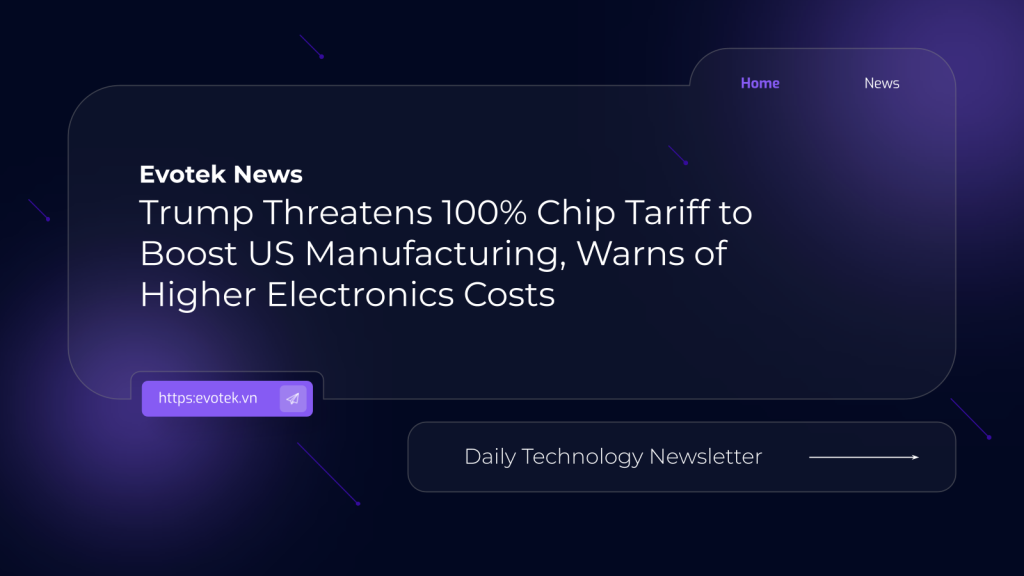WASHINGTON D.C. – President Donald Trump announced on Wednesday his intention to impose a sweeping 100% tariff on imported computer chips, a move designed to drastically increase domestic manufacturing but one that could significantly inflate prices for a wide range of electronic goods, including smartphones, vehicles, and household appliances. The proposed tariff comes with a critical exemption: companies that produce computer chips within the United States would be spared this import tax.
Speaking from the Oval Office during a meeting with Apple CEO Tim Cook, President Trump stated, “We’ll be putting a tariff of approximately 100% on chips and semiconductors. But if you’re building in the United States of America, there’s no charge.” This policy aims to reverse the trend of offshore chip production, a vulnerability highlighted during the COVID-19 pandemic when a severe chip shortage caused widespread disruptions and price surges across industries, particularly in the automotive sector.
Big Tech’s Domestic Investment and Wall Street’s Reaction
The announcement follows a period where the Trump administration had temporarily exempted most electronics from previous tariffs. This new proposition, however, signals a more aggressive strategy to compel reshoring. Major technology companies have already demonstrated substantial commitments to U.S. manufacturing. Since January, Big Tech firms collectively have pledged approximately $1.5 trillion in U.S. investments. Notably, Apple alone has committed $600 billion, including an additional $100 billion boost to a prior February pledge.
Wall Street reacted positively to the potential for tariff exemptions benefiting these companies. Following Trump’s declaration with Cook present, Apple’s stock price surged 5% in regular trading and an additional 3% in extended sessions. AI chip giant Nvidia, which has also made significant U.S. investment pledges, saw its shares climb slightly in extended trading, adding to its impressive $1 trillion market value gain since the start of the second Trump administration. Even Intel, a long-standing computer chip pioneer facing recent challenges, experienced a rise in its stock price in extended trading.
Industry groups, such as the Semiconductor Industry Association, have yet to comment on the proposed tariffs. Globally, demand for computer chips continues to soar, with sales increasing by 19.6% in the year ending June, according to the World Semiconductor Trade Statistics organization.
A Strategic Shift from Previous Administrations
President Trump’s tariff threats represent a significant departure from the chip production revival plans initiated by the Biden administration. The bipartisan CHIPS and Science Act, signed into law by President Joe Biden in 2022, provided over $50 billion in funding, tax credits, and other financial incentives to support new domestic computer chip plants, research, and workforce training. This approach sought to attract private investment through direct support.
In contrast, President Trump is leveraging the threat of dramatically higher import costs to compel companies to establish factories domestically. This strategy, while potentially accelerating U.S. production, carries the risk of squeezing corporate profits and inevitably pushing up consumer prices for a broad spectrum of products, from mobile phones and televisions to refrigerators and other essential goods of the digital age. The ultimate impact on consumers and the global supply chain remains a key question as this bold policy takes shape.

 日本語
日本語 한국어
한국어 Tiếng Việt
Tiếng Việt 简体中文
简体中文